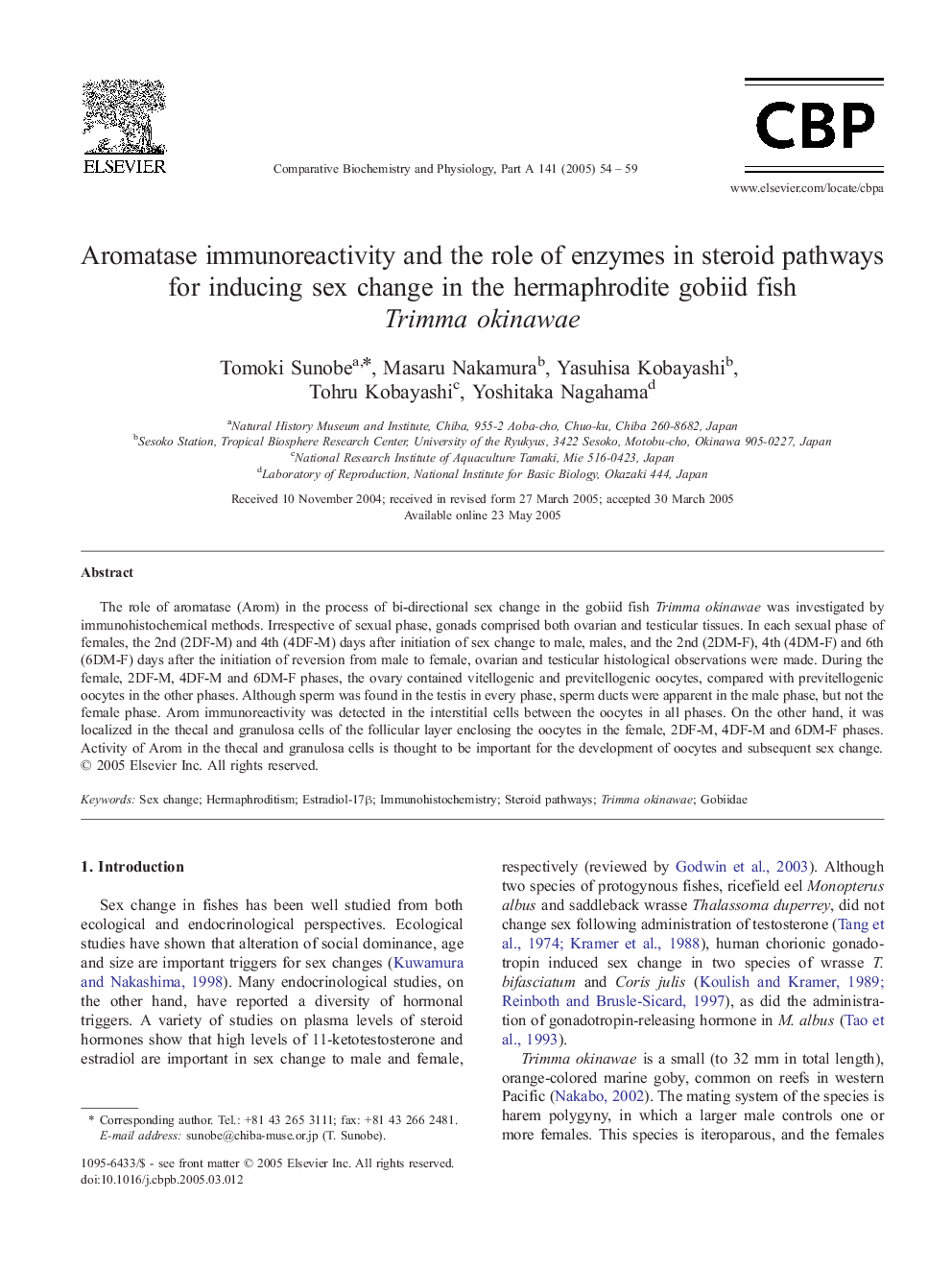| Article ID | Journal | Published Year | Pages | File Type |
|---|---|---|---|---|
| 10819115 | Comparative Biochemistry and Physiology Part A: Molecular & Integrative Physiology | 2005 | 6 Pages |
Abstract
The role of aromatase (Arom) in the process of bi-directional sex change in the gobiid fish Trimma okinawae was investigated by immunohistochemical methods. Irrespective of sexual phase, gonads comprised both ovarian and testicular tissues. In each sexual phase of females, the 2nd (2DF-M) and 4th (4DF-M) days after initiation of sex change to male, males, and the 2nd (2DM-F), 4th (4DM-F) and 6th (6DM-F) days after the initiation of reversion from male to female, ovarian and testicular histological observations were made. During the female, 2DF-M, 4DF-M and 6DM-F phases, the ovary contained vitellogenic and previtellogenic oocytes, compared with previtellogenic oocytes in the other phases. Although sperm was found in the testis in every phase, sperm ducts were apparent in the male phase, but not the female phase. Arom immunoreactivity was detected in the interstitial cells between the oocytes in all phases. On the other hand, it was localized in the thecal and granulosa cells of the follicular layer enclosing the oocytes in the female, 2DF-M, 4DF-M and 6DM-F phases. Activity of Arom in the thecal and granulosa cells is thought to be important for the development of oocytes and subsequent sex change.
Related Topics
Life Sciences
Biochemistry, Genetics and Molecular Biology
Biochemistry
Authors
Tomoki Sunobe, Masaru Nakamura, Yasuhisa Kobayashi, Tohru Kobayashi, Yoshitaka Nagahama,
